Primer on China’s Revolution and Maoism, Part 1
This primer on China’s Revolution is a 10-part study material offered to all socialists and anti-imperialist and democratic activists. It was drafted in 2021, intended to be released in time for the centennial of the Communist Party of China, but had to undergo additional additions and revisions. This is Part 1 of the material. The complete primer will soon be available in PDF press-quality format.
PRIMER ON CHINA’S REVOLUTION AND MAOISM
On the occasion of the 100th year of the Communist Party of China
Prepared by Andi Belisario for PRISM (Reissued 1 October 2022)
(Part 1. The old-democratic revolution in transition to the new)
INTRODUCTION
As socialists, anti-imperialists and progressives, we need to delve into China’s history, especially its historical path in the modern era. We need to get some overview of its land and people, the legacies of its old civilization, its world-shaking revolution and socialist era, and beyond—to understand what has become of it, and how and why it is playing a peculiar role in the world today.
We cannot avoid viewing China from this long and wide perspective, because its people, civilization, and legacies of revolution and struggle against all odds, have generated energies that have impacted and continue to affect not just China the country, not just its neighbors in the Asia-Pacific region, not just people across the world with Chinese roots, but the entire world.
In particular, as socialists, we want to absorb the lessons of China’s historical path in the modern era that led it to revolution and liberation against imperialism and for socialism under proletarian leadership, and how these lessons must be upheld in the 21st century.
I. CHINA BEFORE THE CPC ESTABLISHMENT
The 80-year period from 1840 (start of the Opium War) to 1921 (establishment of the CPC) may be called the period of early modernizing China. This time saw the end of the Qing Dynasty and the establishment of the Republic of China. In this period, imperialism and local feudalism combined to transform China into a semicolonial and semifeudal society. Also in this period, the Chinese people waged heroic struggles against the imperialists and their local running dogs.
This was the period of democratic revolution under the leadership of the bourgeoisie. After 1919, and especially when the Communist Party of China (CPC) was established in 1921, leadership of the democratic revolution passed to the hands of the proletariat and its political party. At that point, the old-democratic revolution passed into the new-democratic revolution.
1. What conditions prevailed in China before it was subjugated by modern imperialism?
1.1 China’s ancient and feudal civilization
China’s ancient and feudal kingdoms (and later its unified empire) had been existing independently for several millennia. Its feudal mode of production, where the natural economy of self-sufficiency continued to predominate, had existed for some 3,000 years, at least since the Western Zhou dynasty.
The millennia-old feudal pattern in China was that of relatively self-sufficient small peasant farms, combined with landlord power of feudal economic and political privileges imposed on the peasantry. The Fengjian and well-field systems were similar to the Western vassalage and manorial systems.
On top of these, the imperial state and its vassal states also played major economic roles in collecting taxes and levies, in defense and public works (such as building irrigation and flood-control canals, roads and fortifications), in controlling trade and commerce, finance, and craft industries, and in pursuing elite education and the sciences. At the level of infrastructure, the Chinese state and culture were strongly steeped in the feudal glue of Mandarin bureaucracy, civil service exams, and Confucianism combined with warlordism.
We mention these feudal features because they persisted all the way to the 20th century under the rule of imperialism and the Guomindang; some remnants even carried over to the people’s republic. They continued to play significant roles in Chinese society especially in the superstructure and in continuing class struggle.
Multinational diversity. Due to its geographic position and vast territory, diversity, and distinct processes of historical development, China persisted as a multiplicity of diverse nationalities. The Han majority became dominant and its states eventually played both an oppressive and integrative role vis-a-vis minority nationalities. Nevertheless, throughout the feudal era and through the long series of imperial dynasties, many minority nationalities were able to assert their distinct identities and lifeways.
Furthermore, under these successive ancient and feudal states, the Chinese people maintained long-standing relations with other Asian countries—whether such relations were one of vassalage, trading networks, migrant settlements and intermarriages, or some combination. In such ways, Chinese civilization expanded among or influenced neighboring regions and peoples, way beyond the de-jure jurisdiction of the Chinese state.
High degree of unevenness. Due to specific historical factors, China’s economic, political and cultural development was extremely uneven. Such factors included its vast territory, geographic and ethnographic diversity, and a long-standing feudal social system that repeatedly generated forces for fragmentation.
Despite unifying factors such as the Han-Manchu dynastic culture, administration of centralized water works, robust imperial military-bureaucratic machinery, a common writing system, etc., the feudal mode of production and fairly large minority nationalities provided a rich soil for regional warlordism, even independent local economies in outlying territories such as Mongolia, Manchuria, Tibet, Xinjiang, and Taiwan.
These distinct features of China—as multi-nationality peoples within fluid state borders, and as a civilization extending beyond the said borders and spread globally by overseas Chinese—would play very distinctive roles in its new-democratic and socialist revolutions as well.
1.2 The maturing feudal economy
From 1685 onwards (during the so-called High Qing era), China’s feudal system began to mature. Its local economies of natural self-sufficiency gradually eroded, while agricultural innovations, large-scale commodity production, more intensive forms of tenancy and usury, and long-distance trade within the empire and with other lands, expanded.
Various components of native mercantile capitalism developed together, such as large-scale commercial agriculture that produced cash crops (e.g. tea, silkworms, cotton, foodstuffs), craft industries (e.g. textile, ceramics, paper, gunpowder etc.), merchant guilds, long-distance shipping, and foreign trade.
Trade with Europe grew rapidly between 1719 and 1806, especially after Chinese ports were opened more freely. This in turn further spurred local commodity production and commerce. Imperial Britain, chafing at the restrictive protocols of the Qing court, resorted to flexing its military-merchant muscles to more aggressively expand trade with China—including illegal trade in opium.
The result was a series of events catastrophic to China’s traditional feudal production system and the economic base of the Qing state. The First Opium War (1840), the unequal Treaty of Nanking (1842), the ensuing economic collapse, the Taiping Rebellion (1851), and Second Opium War (1856), all hastened China’s feudal crisis and worsening imperialist intrusion.
(In contrast, Japan—which was equally coveted and bullied by the Western powers during the same period—had abolished feudalism and instituted enough social reforms especially after the 1868 Meiji restoration. As a result, it was able to launch its own rapid capitalist industrialization and more effectively resist imperialist bullying, eventually becoming imperialist itself.)
1.3 The revolutionary tradition of the Chinese people
The Chinese people carry a long-standing and well-deserved reputation not only for their legendary industriousness, patient endurance and innovative technologies, but also for their rich revolutionary traditions, including heroic armed struggle by the masses using the most diverse martial skills and quasi-military organizations.
The long history of countless peasant rebellions among the Han majority and minority peoples (including army mutinies supported by the disgruntled peasantry) repeatedly prove the Chinese people’s ability to resist and overthrow despots and to fight against all sorts of feudal impositions by waging revolutionary armed struggle and using other means.
The most successful rebellions, however, merely led to a new dynasty with a fresh “heaven’s mandate” replacing an old decrepit one. Even so, similar rebellions reemerged, again and again. Ultimately, they spread nationwide during the Qing dynasty (1644-1912) leading to its downfall.
The best-known peasant and minority-people rebellions are the near-simultaneous Taiping Rebellion (1851-64, in south China), Nian Rebellion (1851-68, in north China), Panthay Rebellion (1856-68, in Yunnan), and the Dungan Rebellion (1862-77, in northwest China). The Boxer Rebellion (1899-1901), for its part, signalled a marked shift to the anti-foreign and incipient bourgeois-nationalist impulse to fight imperialism and bring forth democratic institutions.
2. How did imperialism subjugate China and use feudalism to further oppress its people?
2.1 China’s subjugation and division by imperialist powers
Foreign subjugation of China began in earnest in 1840. It was part of and motivated by the global expansion of the rising bourgeoisie in Western countries. By the time of the Qing dynasty, major maritime powers in Europe such as Great Britain, France, Spain, Portugal and the Netherlands were already deep into old-style colonial conquests in other global regions—for their primitive capitalist accumulation and later capitalist operations.
The old mercantile-feudal colonialism gave way to the mercantile-bourgeois drive for new and bigger markets for industrial commodities and sources of raw material. On unprecedented scales, the Western bourgeoisies penetrated into all populated and yet-unexplored territories of the world, linking many countries to the industrial heartland. One by one, ancient civilizations—which had their own long and distinct history of independent development, such as native America, the Near East, Persia, India, China and Africa—fell prey to Western colonialism.
When modern imperialism emerged by the late 19th century, the Western powers multiplied their greed and drive for colonial expansion and inter-imperialist rivalries. They completed the division of the world like monsters slicing up an earth-sized cake.
China was among the biggest territories for imperialist contention and pillage. Given its huge area and population (and therefore potentially vast market and resources), and its backward feudal-agrarian economy and tottering imperial state, the country was ripe for the picking.
Thus, the imperialist powers ganged up on China: first Britain, followed by Germany, France, the USA, tsarist Russia, and later Japan. They used all the weapons in their arsenal—military, political, economic, and cultural weapons—to subjugate China chunk by chunk and turn each chunk into a colony or semicolony.
They launched relentless wars of aggression—starting with Britain’s Opium War in 1840, followed by the Anglo-French alliance in 1857, the 1894-95 Sino-Japanese war over Korea, then the war of the imperialist “Eight-Nation Alliance” in 1900 to drown the Boxer Rebellion in blood. Each war further weakened the Qing regime through unequal treaties and war reparations. These imperialist (or imperialist-backed) wars against China would continue for 110 years, all the way to 1949-1950 when the Communist Party of China and the People’s Liberation Army were finally able to liberate most of the country except Taiwan and Hong Kong-Macau.
Unequal treaties and port cities. Ever since China was defeated in the two Opium Wars, the colonialist-turned-imperialist powers forced the country to sign many unequal treaties—such as those of 1842, 1844, 1858, 1860, 1895, 1897-98, 1901, and 1915. The imperialist powers used these treaties to carve up the entire country. They were thus able to control all of China’s important commercial ports, administer the surrounding territories as “concessions” where they exercised consular jurisdiction, and station their military and naval forces to “guard” their concessions.
Between 1842 and 1914, the imperialist powers controlled the great treaty-port cities of Shanghai, Tianjin and Shenyang, the treaty ports of 90 smaller cities, and 33 foreign concessions. Britain seized Hong Kong and adjacent territories. Japan occupied Taiwan and Penghu island, and controlled Lushun port. The foreign powers likewise occupied other Asian countries that were under China’s protection, or which were merely along its trade routes.
Foreign economic control. The imperialist powers controlled most of China’s economic lifelines —its customs, foreign trade, communications and transport (including inland trade routes via railways and rivers). Thus they were able to convert China into a huge market for their industrial goods, and harness its agriculture and extractive industries to serve imperialist needs.
By 1894, the imperialists began setting up selected industries in order to process the raw materials they needed, exploit the country’s dirt-cheap labor, and exert further economic leverage. They monopolized China’s banking and finance, lent funds at usurious rates, and strangled independent national capital. They built up a huge network of exploitative merchant-usury operations, thus creating the big comprador bourgeoisie that was most beholden to them and allied to the landlord class.
Foreign cultural aggression. The imperialist powers were relentless in their efforts to impose Western culture and coopt if not erode China’s independent culture. They waged cultural aggression in the deceptive form of religious missionary work, by running Western-style hospitals, schools, and newspapers, and by inviting Chinese youth to study abroad. Their basic aim was to train a generation of intellectuals and professionals who would serve their interests and further deceive the people. On the other hand, many of these petty-bourgeois intellectuals would later go beyond the confines of their original role as defenders of bourgeois liberalism.
2.2 China becomes semicolonial and semifeudal
The imperialist powers controlled the whole of China not just through the most strategic financial and economic levers but also through direct and indirect political and military power. They used the sheer brutal force of military power to transform a nation that was formerly independent (although under the Qing yoke) into a vast semicolony and smaller chunks of direct colonial enclaves. At the same time, they hastened the disintegration of China’s feudal society and spurred the growth of some capitalist elements—which combined to transform the country into a semifeudal one.
Semifeudalism. Internal factors within China, such as the expansion of commodity production and trade (the seeds of native capitalism), were already eroding old-style feudalism and the natural economy of self-sufficiency even before 1840. But from that year onwards, the extensive intrusion and impacts of foreign capitalism became added factors. Modern imperialism from the 1870s onward further hastened this process.
At the same time, the foreign powers partnered with domestic feudal forces to hinder the full growth of Chinese capitalism. They had no intent to transform China into a fully industrialized country, but rather encouraged only those comprador-oriented capitalist interests (e.g. big merchant-usurer operations) to keep it within the bounds of a colony or semicolony.
Meanwhile, the landlord class’ exploitation of the hundreds of millions of peasants—the basis of feudal exploitation—remained intact. These feudal forms combined with imperialist and comprador-type capital. Thus, China became semifeudal; the combined comprador-landlord interests became dominant in its socio-economic life. National capitalism grew to some extent, but remained generally weak and fettered to imperialist and feudal dictates.
Emergence of China’s bourgeoisie and proletariat. In the late 19th century, a number of merchants, landlords and bureaucrats had already begun to invest in modern industry, spurred by the attractions of foreign capitalism and the widening fissures in feudal rule. The Chinese bourgeoisie arose from these social classes and strata.
National industries would further grow during World War I (1914-1918), especially in textile and flour manufacturing, because the war in Europe forced the imperialist powers to temporarily loosen their stranglehold on China. This further spurred the growth of the national bourgeoisie—that section of the bourgeoisie increasingly engaged or interested in industrial capitalism.
At the same time, imperialist intrusions and semifeudalism led to bankruptcy of peasants and artisans in large numbers, turning them into propertyless laborers seeking wage work in the factories, mines, railways and elsewhere. Thus emerged the Chinese proletariat. They worked in big firms mostly owned and controlled by the imperialists, in smaller firms owned by the national bourgeoisie, and also in the most diverse kinds of wage labor in urban and rural areas.
The proletariat before 1921. Nationwide in the early 20th century, the industrial working class comprised only 0.5% of the population. They were highly concentrated in Shanghai, Canton-Hong Kong area, Wuhan, Changsha, and smaller industrial centers in Hebei and Manchuria. Some 44% of the Chinese proletariat worked in foreign-controlled enterprises.
There were only an estimated 660,000 full-time factory workers in 1913, growing to over 1 million by 1919. Another 2 million or so worked in mining, utilities and construction, and much larger numbers in transportation (10 million) and handicrafts (12 million). Most urban workers remained closely tied to the countryside.
The workers were super-exploited especially because labor was so plentiful. Wages were meager, workdays ran for 12-18 hours, and child labor was widespread. Due to labor fluidity, the workers were difficult to organize—although pre-union forms of organization (secret societies and mutual-aid societies) persisted. Only 152 strikes were recorded before the sudden flowering of the working-class movement in 1919.
The peasantry; severe rural impoverishment. In the 1920s, China had a population of about 450 million. Of this, more than 75% lived in rural areas. Only an estimated 12% lived in cities and towns with populations upwards of 10,000; the balance were in small townships of 2,000-10,000. The overwhelming majority of more than 70% worked in agriculture or dependent on agricultural livelihoods, with a growing proportion also dependent on non-agricultural side-occupations.
About 45% of the peasantry owned the land they tilled, but less than the minimum acreage required to feed an average family. Some 25% partly owned their land, while nearly 30% of the rural population owned no land. Thus, more than half of the rural population were partial or full tenants, paying one-half or more of their produce as land rent, or farm workers receiving measly wages.
The peasantry bore the bulk of feudal exploitation and colonial-turned-imperialist repression, in addition to heavy government exactions. They suffered repeated cycles of famine, death and massive dislocations due to droughts, floods, changes in land use, plagues, and resulting crop failures, bankruptcies, and loss of land.
These produced large masses of landless rural people—semiproletarian vagrants, itinerant rural folk subsisting on odd jobs, and bandit bands. Many eventually migrated to the towns and cities in ever-growing numbers, providing a cheap and endless supply of wage and coolie labor, including those shipped overseas to capitalist mines, plantations, and road building programs. The labor “diaspora” extended into wider parts of Asia, and into Europe and America. China had thus acquired its infamous if undeserved reputation as the “sick man of Asia.”
3. How did the Chinese people resist imperialist and feudal rule prior to 1921?
3.1 Peasant rebellions and the old bourgeois-democratic revolution
The Chinese nation did not meekly accede to imperialist subjugation. Rather, its people heroically fought foreign invasion, oppression and exploitation. The Opium War of 1840 marked the start of the century-long Chinese people’s revolutionary struggles against colonialism and for national self-determination.
The Chinese people’s national struggle, in essence, was tightly linked with their struggle against their own feudal-autocratic rulers. All Chinese nationalities fought imperial or local feudal tyrants, through hundreds of peasant rebellions or revolutionary wars from the first (Qin) dynasty all the way to the Taiping War (1850-1864) during the last (Qing) dynasty.
The vast masses of peasantry, as the worst victims of feudalism, comprised the main force in the many rebellions, uprisings and other struggles against foreign and feudal rule. They were often led by disgruntled army officers, local nobles, peasant notables, or warrior monk orders. Joining the peasant masses were the intellectuals and (from the late 19th century onwards) the incipient bourgeoisie and petty-bourgeoisie.
The Boxer Rebellion. From 1899 to 1901, the people of North China led by armed “Righteous and Harmonious Fists” martial-arts societies (Yìhéquán or Yi Ho Tuan Movement, or “Chinese boxers” in simplistic Western terms) waged a spontaneous armed struggle against the extensive land-grabbing and other aggressive acts by Western missionary groups and military forces.
The broad masses of peasants, handicraftsmen and other people took part in the Boxer movement. Using religious and other channels, they organized themselves around secret societies and waged a heroic struggle against the Western powers.
By early 1900, the Boxer attacks on foreign facilities, missionaries and their Christianized Chinese followers spread across the country. The Qing imperial court led by the Empress Dowager supported the Boxers—although with reluctance. In June, the Boxers supported by Imperial Army units occupied Beijing and laid siege on the foreign-controlled Legation Quarter for 55 days, and occupied the nearby city of Tianjin as well.
The imperialist “Eight-Nation Alliance” (USA, Britain, Japan, Germany, Russia, France, Italy and Austria) reinforced its beleaguered forces with 20,000 heavily armed foreign troops. These foreign troops crushed the Boxers and their Imperial Army supporters, and reoccupied Tianjin and Beijing on 14 August 1900.
The imperialists thereby suppressed the Boxer rebellion with utmost savagery. They imposed bloody measures against the Boxers, pro-Boxer imperial forces, and the Chinese people in general. They plundered the capital and nearby areas. They exacted immense amounts of war indemnity, which bled dry the imperial treasury and the tax-paying public.
3.2 The old bourgeois-democratic revolution prior to 1921
Emergence of bourgeois nationalist and democratic groups. After the Boxer Rebellion was brutally suppressed, Chinese revolutionary underground groups emerged in the first decade of the 20th century. Composed mostly of liberal and nationalist bourgeois intellectuals, they began to provide more conscious and organized leadership in the movement to overthrow the Qing dynasty and resist imperialism.
Their mostly urban-based following extended beyond China, to the growing ranks of overseas Chinese in Asia and America. Many intellectual youth studying overseas (especially in Japan, Europe and US) developed liberal-bourgeois ideas mixed with anarchist ones. These greatly influenced the ideology of China’s bourgeois-democratic revolution.
Sun Yatsen. Among these intellectuals was Sun Yatsen, a medical doctor who was raised in Hawaii, educated in Hong Kong, and radicalized in Japan. In 1905, he articulated as his political philosophy (for the first time in its complete form) the Three People’s Principles: nationalism, democracy, and people’s welfare.
That same year, he was able to unify the various small revolutionary groups and establish the United League or China Revolutionary League (CRL, or Tongmenghui), the first revolutionary party of the Chinese bourgeoisie. Although its leadership was Japan-based, its mass base grew within China and actively prepared for armed struggle.
The 1911 (Xinhai) Revolution. From 1901 to 1908, small-scale uprisings repeatedly broke out in various areas of China. Some of these involved Sun Yatsen and other CRL-associated groups. They all ended in failure and were brutally suppressed.
Meanwhile, the much-weakened Qing imperial regime tried to rebuild its armed forces into a modernized New Army. Sun Yatsen and the CRL activists began to work within New Army units to spread the revolutionary message and to organize secret army cells.
From 1908 to 1911, the CRL and other groups continued to launch uprisings in many parts of China. In September 1911, local CRL-linked associations in the three Wuhan cities (Wuchang, Hanyang and Hankou) gathered sizeable New Army units to start an armed uprising. On the night of 10 October, the rebels seized Wuchang, followed by the two other cities two days later.
The Wuhan insurrection rippled into many other local uprisings across the country. They were warmly welcomed by the people, joined by the spontaneous masses, and supported by defecting New Army units organized by the CRL and other revolutionary groups.
Throughout the last three months of 1911, 17 provinces had declared independence from the imperial Qing regime and held a congress in Nanjing (capital of Jiangsu in eastern China) on 29 December.
The Republic of China. On New Year’s Day 1912, the new Republic of China (ROC) was formally announced, with its government seat in Nanjing. Sun Yatsen, chosen provisional president, promptly issued decrees encouraging democracy and capitalism. On 12 February, in Beijing, the child Emperor Pu Yi and his mother the Empress Dowager accepted the terms of abdication.
The 1911 Revolution thus overthrew the Qing imperial regime and ended the more than 4,000 years of ancient and feudal autocratic rule in China. But the foreign and local reactionary forces were able to blunt the revolution’s gains through political maneuvers against the still-weak bourgeoisie.
Yuan Shikai, former military chief of the Qing regime and the most prominent among the Northern warlords, was backed by the imperialists and constitutional monarchists who had joined the 1911 Revolution. His warlord clique, which represented the big landlord and big comprador classes, hastily set up the Beijing-based “Beiyang government” to counter Sun Yatsen’s Nanjing-based government. Sun Yatsen and his CRL forces had to strike a deal and retreat. On 10 March 1912, Yuan Shikai was inaugurated as the ROC’s second provisional president, replacing Sun Yatsen who went into a second Japan exile.
This signalled the retreat of the 1911 Revolution. From that point up to 1927, most of China would be under the control of the Northern warlords (generals commanding armies and who ruled as military provincial governors) while Sun Yatsen’s forces retained a tenuous foothold in south China. The basic character of Chinese society thus remained semicolonial and semifeudal for the next four decades.
Sun Yatsen and KMT struggle vs. Yuan Shikai. On 25 August 1912, the CRL and five other radical parties merged to form the Chinese Nationalist Party or Guomindang (Kuomintang, or KMT from hereon), with Sun Yatsen as chairman. Shifting to open parliamentary struggle, the KMT broadened its middle-class base of support and pushed for constitutional democracy. It won an overwhelming majority in the first National Assembly election in December 1912, and was thus able to more actively resist Yuan Shikai’s autocratic moves and his Beiyang government’s oppressive measures.
However, Yuan Shikai quickly neutralized the KMT’s gains both in Beijing and in the southern provinces. He ordered the murder of a top KMT leader in Shanghai and deployed his troops southward. In response, the KMT launched another armed uprising in July 1913 (the so-called “Second Revolution”), through which several southern provinces declared independence. However, Yuan Shikai’s forces defeated all rebellious provinces by September. He banned the KMT (whose leaders went into Japanese exile), and dissolved the parliament in January 1914.
Japan’s 21 demands and Yuan Shikai’s fall. At the same time, the Japanese imperialists were taking advantage of China’s disunity and other weaknesses to expand into Chinese territory. They quickly seized Qingdao from Germany in 1914. In January 1915, they secretly presented Yuan Shikai’s government with 21 demands, and sent an ultimatum four months later.
The Japanese demands included virtual control of Shandong province; extended rights to land and economic resources in Manchuria and Mongolia; converting an iron and steel firm into a joint Sino-Japanese enterprise; prohibiting China from leasing or ceding any harbors or offshore islands to any third power; and virtual control of China’s various other affairs, including the construction of vital railway lines connecting Hubei, Jiangxi and Guangdong.
Yuan Shikai, who was planning to make himself emperor, accepted most of the Japanese demands (while wavering on some) to gain the support of Japanese imperialism. In December 1915, he proclaimed himself emperor of China. Almost immediately, major uprisings broke out in three southern provinces. At the same time, the Chinese people rose as one to oppose Japan’s 21 demands.
As opposition mounted from all quarters, the ailing Yuan Shikai was forced to abdicate on 22 March 1916 and died of uremia in June. The central government collapsed. For the next dozen years, China would be witness to fragmented rule by regional and provincial warlords and recurring warfare among them.
Sun Yatsen and warlord rivalries. In Japanese exile, Sun Yatsen reorganized the KMT on 8 July 1914. Three years later, he returned to China. Under the banner of the Movement to Protect the Constitution, he gathered members of the dissolved Parliament to reconvene in Guangdong in August 1917.
Chosen as Generalissimo of the ROC Military Government, Sun Yatsen allied with the warlords of southwest China to fight the Northern warlords. But they merely used him for their own added legitimacy. Again, these various warlords colluded to oust him in May 1918.
Retreating to Shanghai amid frustrations and defeats, Sun Yatsen discovered new hope in the Great October Socialist Revolution and the patriotic May Fourth Movement. With revolutionary vigor, he resurrected the KMT on 10 October 1919 and moved closer to the fast-growing movement of workers and peasants.
3.3 The May Fourth Movement of 1919
In a Paris “peace conference” after World War I, in January 1919, the victorious imperialist powers led by Britain, France, the US, and Japan practically decided China’s fate. There, the imperialists rejected China’s demand to repeal all unequal treaties they forcibly imposed on it. The entire people were particularly outraged by the Versailles Treaty, which awarded vast German holdings in Shandong to Japan instead of returning them to China.
These insults on Chinese sovereignty fanned the flames of anti-imperialism and triggered the May Fourth Movement. On 4 May 1919, some 5,000 Beijing students staged protests in Tiananmen Square. In the following weeks, the anti-imperialist movement snowballed in 16 out of 21 provinces despite mass arrests by the Beijing-based government. More than 100,000 people joined the protests—mostly national-bourgeois and petty-bourgeois intellectuals, professionals and merchants at first, then by growing ranks of workers and peasants.
On 5 June, Shanghai workers launched a general strike; by 10 June, some 10,000 workers had joined. Even the merchants closed their establishments in support. The Chinese proletariat thus entered the political stage and showed the first glimpses of its own power.
Meanwhile, during and just after World War I, work-study programs enabled several hundred thousand Chinese youth to go to France, Germany and neighboring Soviet Russia as working students. Many of them were radicalized or became Communist, and later returned to China as committed revolutionaries.
Conditions thus ripened for the rapid spread, not only of revolutionary nationalism or anti-imperialism, but of Marxism. Many radical intellectuals began to look up to the young Soviet socialist state and the message of the October 1917 Revolution. Moving away from Western liberal ideals towards serious study of Marxism-Leninism, they saw the clear links between the national revolution against imperialism and the class struggle against local reactionary classes.
The May Fourth Movement thus hastened the integration of Marxist-Leninist theory with the workers’ and peasants’ movements and the wider people’s anti-imperialist movement in China. It paved the way for the establishment of the Communist Party of China (CPC) two years later, and marked the historic shift from China’s old or bourgeois-democratic revolution to the new-democratic revolution.
Recalling this momentous event in 1939, Mao Zedong said:
The May 4th Movement twenty years ago marked a new stage in China’s bourgeois-democratic revolution against imperialism and feudalism. The cultural reform movement which grew out of the May 4th Movement was only one of the manifestations of this revolution. With the growth and development of new social forces in that period, a powerful camp made its appearance in the bourgeois-democratic revolution, a camp consisting of the working class, the student masses and the new national bourgeoisie. Around the time of the May 4th Movement, hundreds of thousands of students courageously took their place in the van. In these respects the May 4th Movement went a step beyond the Revolution of 1911.
Proliferation of Marxist intellectuals and study groups. From the May Fourth Movement emerged many radicalized groups. They had varied names such as Renaissance Society, the National Students Association, the Women’s Rights Movement, the Social Welfare Society, the New People’s Society, the Young Socialist Group, the Marxist Club, and various workers’ clubs as well.
Among them, Marxist cells and study groups soon emerged, grew, and reached out to organize the broad masses, especially the urban working class. From March 1919 onwards, they organized “mass education speaking corps” in working-class sections of the capital Beijing, nearby Tianjin, and neighboring areas.
The first Chinese translations of the writings of Marx and Engels appeared even before the rise of Soviet Russia in 1917: excerpts from the Communist Manifesto in 1906 and 1908, and excerpts from Engels’ works in 1907 and 1912. More extensive translations became available from 1919 onward, including the full text of the Communist Manifesto and parts of Das Kapital. Also, many Chinese students in France, Germany, and Soviet Russia were exposed to a wider range of Marxist and Leninist literature, brought them back and helped translate them into Chinese.
All in all, deeper studies of Marxist philosophy, political economy, class struggle and scientific socialism helped in the ideological preparations prior to the CPC’s establishment. By the spring of 1920, small groups of radical intellectuals were already studying and converting themselves to Marxism—in the big cities of Beijing, Shanghai and Wuhan and in smaller ones as well like Changsha and Tianjin—in addition to those who had become Communists as overseas working students.
Future CPC leaders emerge. They were led by student activists and radical intellectuals (including some notable academics), many of whom would later become CPC leaders. Here we mention only the best-known founding members.
Li Dazhao (1889-1927) was a leading intellectual of the New Cultural Movement (1915-1919). He studied law and political science, attended Tokyo’s Waseda University, and in February 1918 became head of the Beijing University library. He was the first Chinese to declare in mid-1918 his belief in Marxism-Leninism and openly endorse the just-victorious October Revolution.
By late 1918, his library office became the center of radical activities in the Beijing University, where he organized systematic Marxist study groups. Many future CPC leaders attended the meetings of the Marxist Research Society, which he led. He played a leading role as adviser of activists during the May Fourth Movement, and helped spread the Marxist study movement to other parts of China.
In December 1919, Li Dazhao’s group became the Society for the Study of Socialism, which had 110 members (although many were anarchists and eclectic socialists) before it fragmented. The handful who remained as serious Marxists regrouped in March 1920 as the Marxist Theory Research Society.
Chen Duxiu (1879-1942), an active leader in the 1911 Revolution and editor of the leading radical journal New Youth (which he founded in 1916), became dean of Beijing University’s School of Letters in 1917. Nearly in parallel with Sun Yatsen’s trajectory, his activities and writings since 1903 already showed political radicalization.
At first Chen Duxiu carried petty-bourgeois radical but eclectic ideas about democracy, nationalism and socialism. By the time of the May Fourth Movement, he became interested in Marxism. In mid-1920, after serving 83 days in jail on charges of “Bolshevism” and moving to Shanghai, he announced his conversion to Marxism and explicitly rejected his former reformist views.
Zhou Enlai (1898-1976) belonged to a wealthy family from Jiangsu, attended middle school in Tianjin, went to Japan for further studies, and returned to China in early 1919. Together with his future wife Deng Yingchao and others, he formed a political discussion society in Nankai University in September 1919 at the height of the May Fourth Movement, followed by a Marxist Research Society together with some Russian students.
In early 1920, Zhou Enlai and others were jailed for six months for joining anti-Japanese rallies. After release, he joined the work-study program and travelled to Europe. But instead of studying there, he worked as a fulltime revolutionary helping to organize Communist cells mainly in France and Britain. Once the CPC was established he helped organize its European work. He finally returned to China in July 1924 as a key Party leader.
Mao Zedong (1893-1976) came from a rich peasant family and showed typical signs of early youthful rebellion and radical views. In 1915-17, he led the student association in his school, First Normal of Changsha and set up a students’ militia against abusive soldiers. Going to Beijing in late 1918 after graduation, he was given a library job under Li Dazhao (a major influence in his converting to Marxism). He returned to Changsha in time for the May Fourth Movement. There he organized several nationalist associations and established a weekly journal, Hsiang River Review.
In late 1919, after leading a student strike against a notorious Hunan warlord, he returned to Beijing and began to seriously study Marxism. In the spring of 1920, he travelled to Shanghai and came under Chen Duxiu’s mentorship. He returned to chaotic Changsha in the summer of 1920, became involved in the KMT struggle against the Hunan warlord, then took a job as principal of the First Normal School’s junior section. By that time he was already a committed Marxist.
Overseas work-study students. The popular “Diligent Work – Frugal Study Movement”, initiated by Chinese anarchists, enabled a large number of Chinese students to work and study at the same time in Europe (mostly in France and Belgium, some in Germany) during and after World War I.
Chinese students in many French cities formed as many as 40 radical groups. In February 1921, among the several thousand Chinese students staying in Paris under the work-study program, radicals led by Cai Hesen (Mao’s long-time friend and comrade) established a Youth Socialist Study Group. These groups later set up a Communist Party, which would become a branch of the CPC around July 1922.
Of the top leaders of the CPC and People’s Republic of China in the 1950s, almost one-fourth had been in France during this period. Other Chinese students such as Zhu De had gone to Germany. Still more Chinese studied in the Soviet Union, including many that studied in France earlier. (Mao himself was among those preparing to go to France when he went to Beijing in the autumn of 1918. He decided to remain in China.)
Other radical groups. Anarchist groups also arose at this time, mainly among Chinese students in France and Japan who picked up the views of Proudhon, Bakunin, and Kropotkin. They clustered around the Anarchist Communist Society (founded in Shanghai in July 1914). By 1919 there were more than 20 anarchist groups, which flourished up to around 1925. Ineffectual in the struggle against imperialism and warlordism, they died out by 1927.
There was also a short-lived Workers Party (1911-1913), and a Chinese Socialist Party that was founded in 1911 and reached 20,000 members until it was suppressed in 1927. A Young China Association started as a radical group in 1918, then become increasingly anti-communist.
3.4 The influence of the 1917 October Revolution
The Great October Socialist Revolution and the newborn Soviet state in neighboring Russia created more favorable objective and subjective conditions for the emergence in China of a revolutionary movement led by the working class through a Marxist-Leninist party. The May Fourth Movement of 1919, while mostly a broad patriotic movement, likewise played a big role in introducing Marxism-Leninism and the lessons of the 1917 Russian revolution to China.
Chinese sympathy for the October Revolution was further enhanced by Soviet foreign policy, which declared a break with the Tsarist-era policies of Russian great-power chauvinism and national oppression. In July 1918, the Soviet state renounced all Russian privileges in China, and promised the return of the Chinese Eastern Railroad to China without compensation.
At the same time, Soviet diplomacy based on proletarian internationalism actively encouraged other nationalist and democratic elements in China to take a more advanced revolutionary anti-imperialist, pro-worker and pro-peasant direction.
Role of RCP. Meanwhile, the Russian Communist Party (RCP, later to become the CPSU) led by Lenin had been stressing the importance of supporting the national liberation movements and other anti-colonial struggles in the East, i.e., the vast continent of Asia. In China and elsewhere, it strongly advised the creation of united fronts between Communists and bourgeois nationalists. At the same time, the RCP and its various formations established institutes to invite, educate and train Asian communists and worker-peasant activists.
China, as the biggest country in Asia, soon became a major focus for Russia’s proletarian internationalist efforts. In November 1918, the RCP established the Chinese section of its People of the East Bureau. A month later, the Union of Chinese Workers was established in Moscow. It is said that several hundred thousand Chinese who were working or studying in Russia had served in the Red Army, thus obtaining a modicum of military training. On 1 July 1920, the RCP founded a Central Organization Bureau for Chinese Communists in Russia. Related organizing work was also done in Russia’s Asian regions such as Siberia and Harbin (in Manchuria).
For Chinese activists, the main stepping-stone to Marxism was the University of the Toilers of the East, founded April 1921. More than 60 Chinese (including Liu Shaoqi) were in its first class of 800. Qu Qiubai, who had been in Moscow since October 1920, served as interpreter and instructor. Later, the Lenin School (founded September 1925) would also educate large numbers of Chinese communists. The Communist International also significantly helped in preparing the ground towards establishing the CPC. ■
Forthcoming: Part 2, Early Phases of China’s New-Democratic Revolution (1921-27)
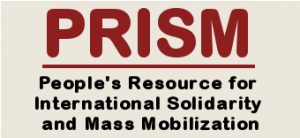
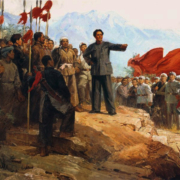
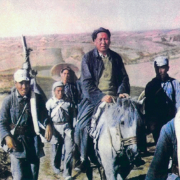
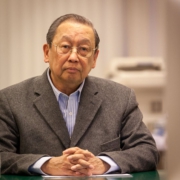
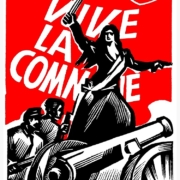
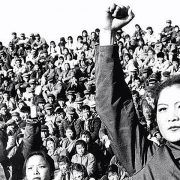
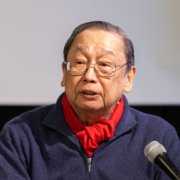


Leave a Reply
Want to join the discussion?Feel free to contribute!